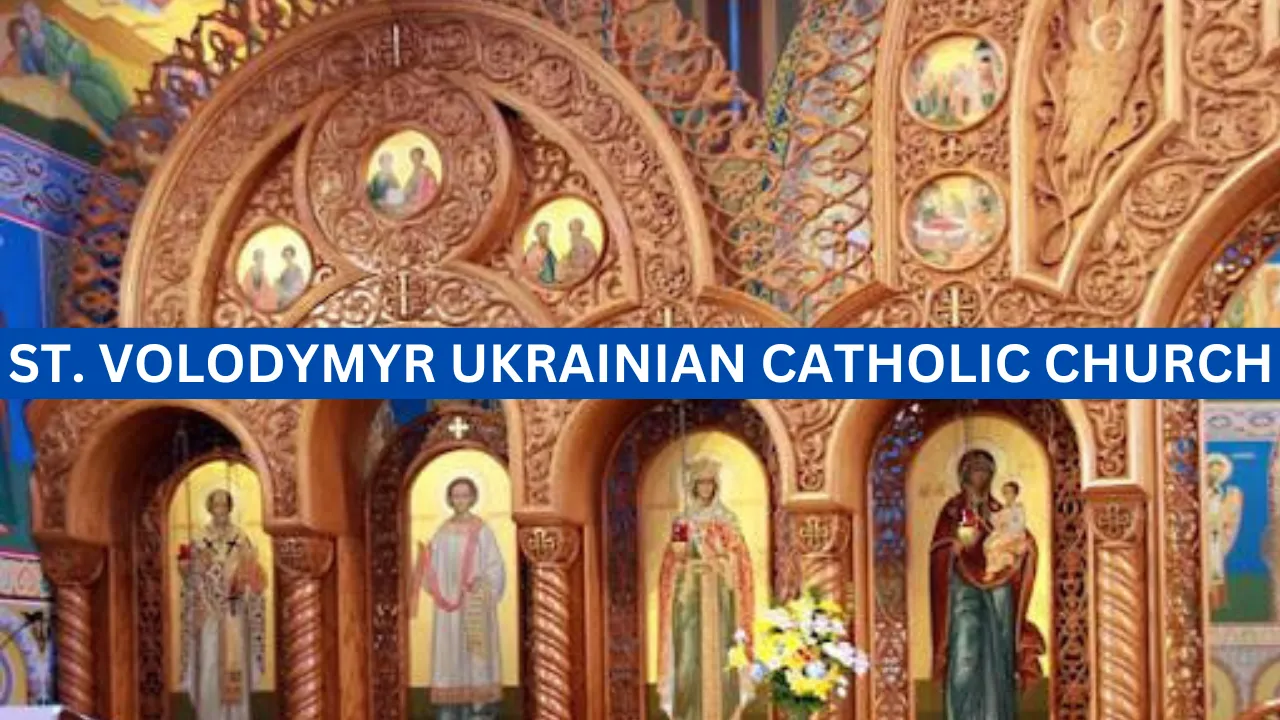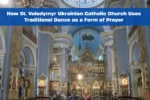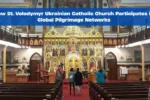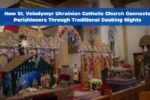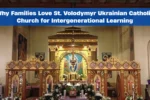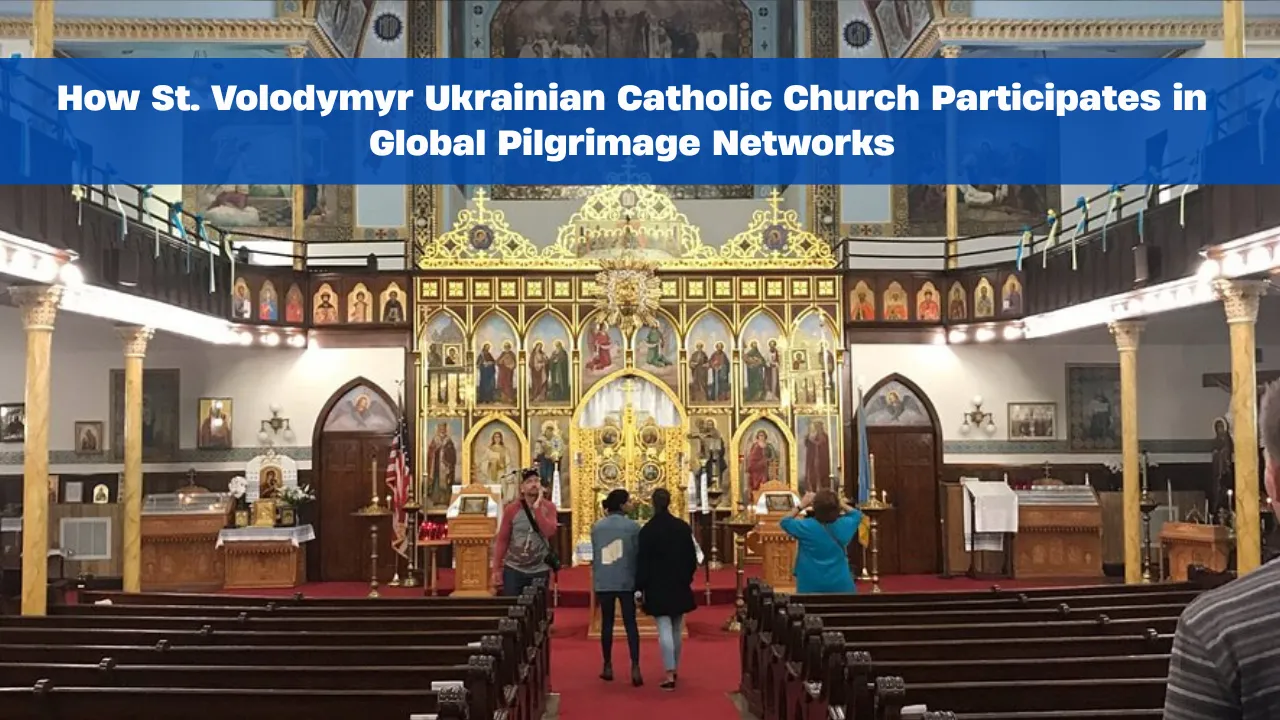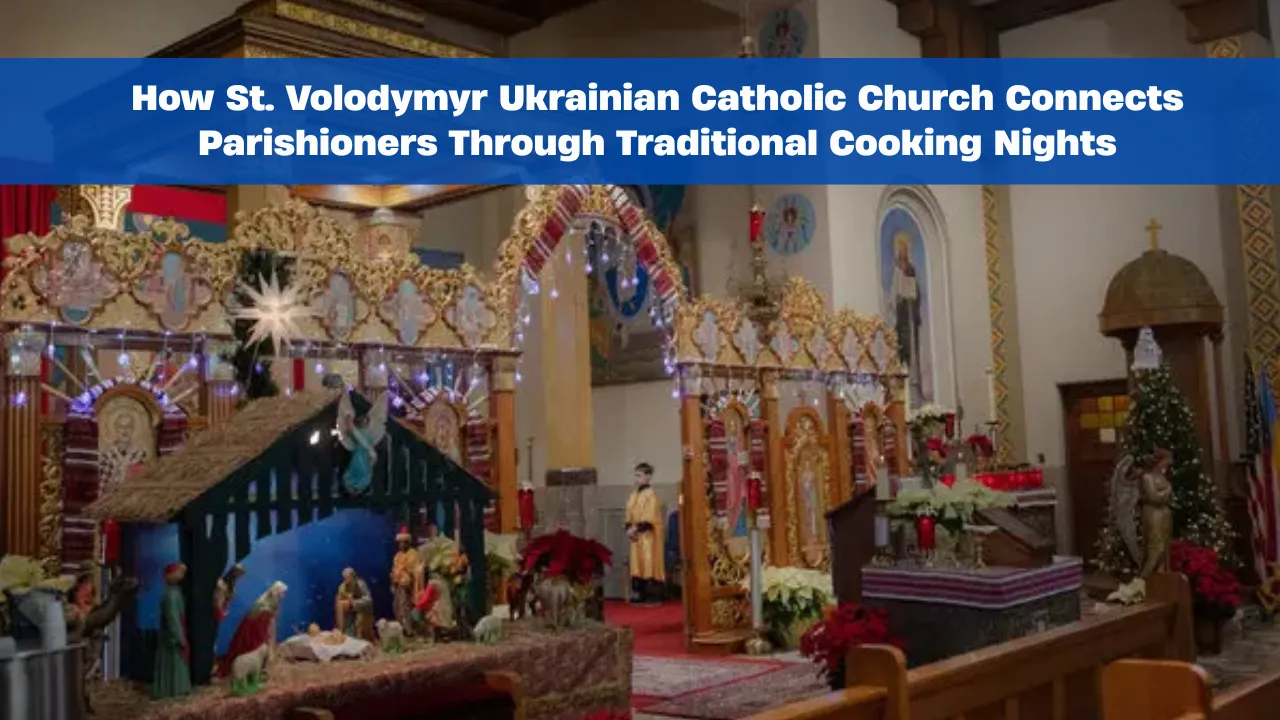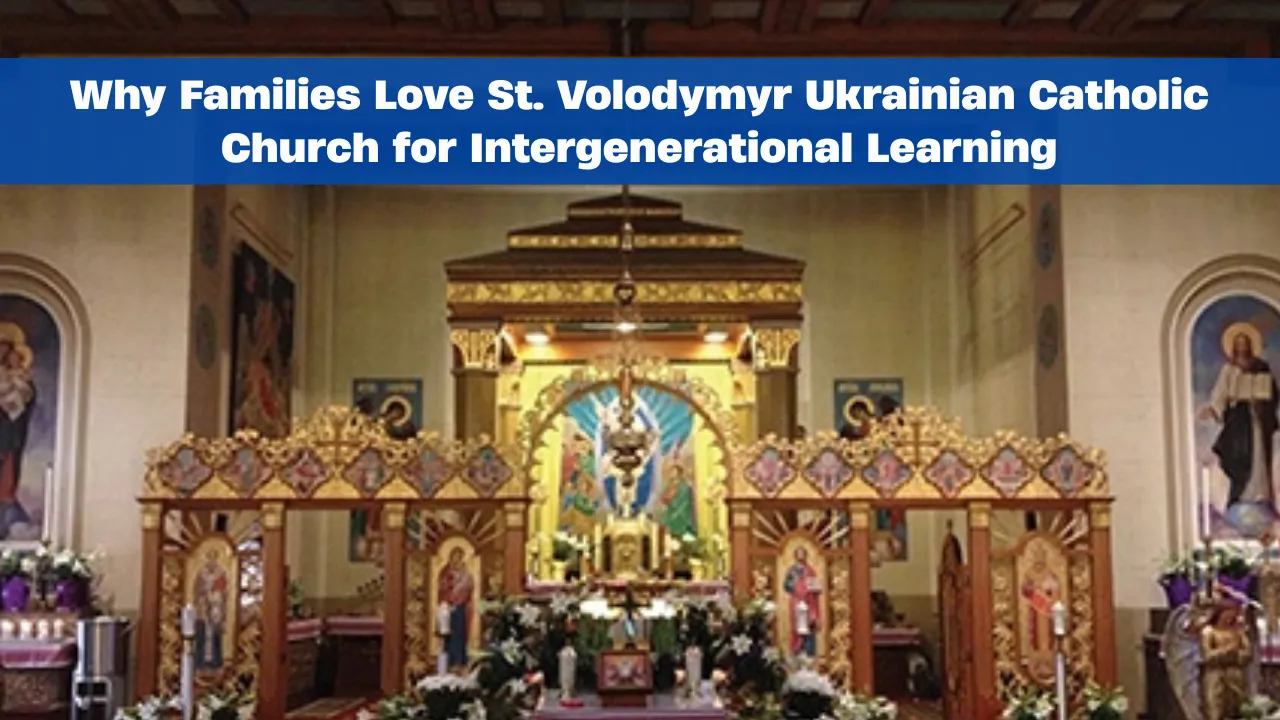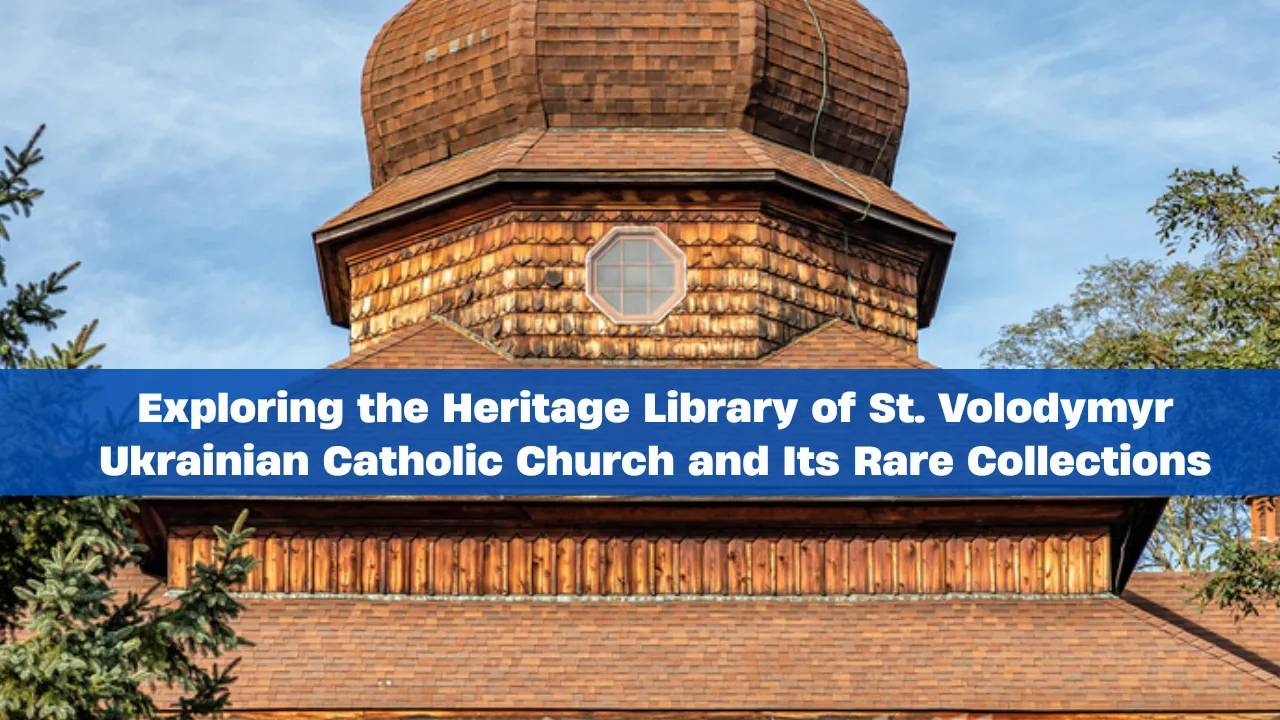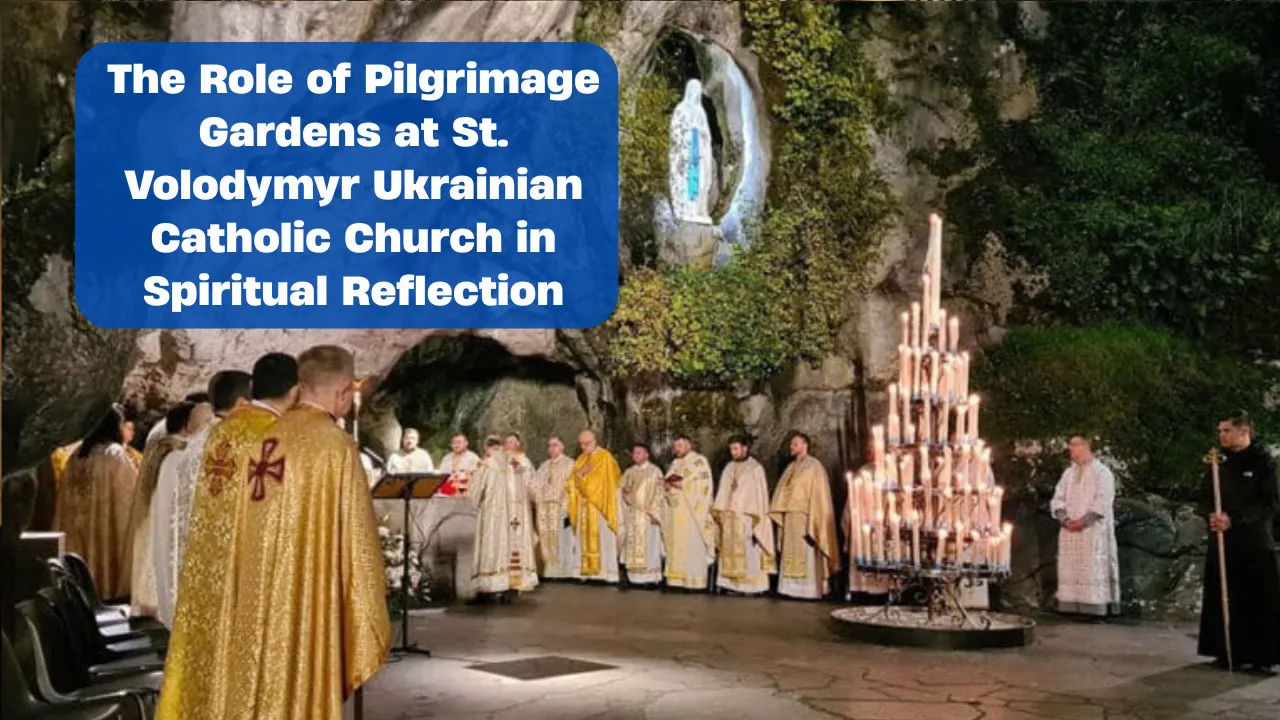St. Volodymyr Ukrainian Catholic Church is more than a house of worship—it is a spiritual canvas, rich with meaning, color, and sacred tradition. Stepping into this revered space, one is immediately enveloped in a world where every image, brushstroke, and hue has a deeper purpose. The walls speak through sacred visuals, telling stories of faith, sacrifice, resurrection, and divine grace. It is a place where theology meets artistry in a visual language that transcends time and culture.
This article takes you deep inside the artistic soul of St. Volodymyr Ukrainian Catholic Church, offering a fresh and detailed look at its iconography and layered symbolism. You’ll learn about the visual theology embedded in the murals and sacred panels, the meaning of common elements found in Eastern Christian spaces, and how this unique expression of faith continues to engage worshippers and visitors alike. Whether you’re an art enthusiast, a student of religious history, or a seeker of spiritual inspiration, this journey will uncover something meaningful for you.
The Heart of Sacred Imagery: St. Volodymyr Ukrainian Catholic Church
The St. Volodymyr Ukrainian Catholic Church serves as a vibrant center for Ukrainian heritage and faith expression in North America. Its interior is richly adorned with traditional Byzantine-style iconography, rooted deeply in Eastern Christian symbols and narratives. What sets it apart is the meticulous attention to detail in every mural, icon, and architectural decision. The spiritual symbolism seen throughout the church doesn’t just illustrate doctrine—it forms part of a lived and embodied liturgical experience. Inside these walls, believers don’t just look at the art; they live within it, making this sacred place a living reflection of Ukrainian Catholic art and culture.
Overview of Iconographic Elements in St. Volodymyr Ukrainian Catholic Church
| Element | Symbolic Meaning |
| Christ Pantocrator | Divine authority, Christ ruling over all creation |
| Theotokos with Christ | Mary’s divine motherhood and her role in salvation |
| Iconostasis | Separation of the earthly from the divine; central to liturgical flow |
| Gold Backgrounds | Eternal light, the heavenly realm |
| Red Garments | Martyrdom, suffering, and divine love |
| Dove Symbol | Holy Spirit and divine guidance |
| Stained Glass Windows | Light as divine presence and enlightenment |
| Cross with Three Bars | Orthodox symbolism of Christ’s crucifixion |
The Role of Iconography in Eastern Catholic Churches
In the Ukrainian Catholic Church, iconography isn’t decorative—it’s theological. Icons are described as “windows to heaven” because they reveal divine truths through color, expression, and sacred form. What makes the art inside St. Volodymyr Ukrainian Catholic Church especially powerful is its fidelity to the Byzantine tradition, where realism is sacrificed for symbolism. This style allows for spiritual storytelling beyond words, inviting both devotion and reflection.
The placement of icons follows a strict theological order. Christ is always central, while Mary, the saints, and angels surround Him to show unity in faith. This hierarchy is not accidental—it mirrors the liturgy and the journey of believers toward salvation. For the faithful, these icons are not passive; they invite participation in prayer and contemplation, drawing the heart closer to God.
Symbolism in Colors and Materials
Every shade, brushstroke, and texture within St. Volodymyr Ukrainian Catholic Church is selected with symbolic weight. Gold leaf, commonly used in halos and backgrounds, signifies divine light and unending glory. Blue often appears in robes of the Virgin Mary, symbolizing heaven and purity, while red underscores sacrifice and divine love—particularly in depictions of martyr saints and Christ.
Materials themselves speak loudly. Carved wood symbolizes the humanity of Christ, stone signifies God’s permanence, and stained glass transforms sunlight into messages of divine presence. These choices unite theology and artistry, helping worshippers sense the sacred even before they hear the liturgy.
Iconostasis: The Sacred Screen
One of the most spiritually and visually important parts of St. Volodymyr Ukrainian Catholic Church is the iconostasis—a screen covered in holy images that separates the sanctuary from the nave. It serves as a visual boundary between the divine mystery and the human world. In Eastern Catholic tradition, the iconostasis isn’t just a wall—it’s a gate to heaven.
The Royal Doors at the center of the screen open during key moments in the liturgy, revealing the altar and reinforcing the mystery of Christ’s presence. Each tier of the iconostasis presents a different theological theme—from the life of Jesus to prophets and apostles—offering worshippers a sacred roadmap through salvation history.
Stories Told Through Icons
The icons in St. Volodymyr Ukrainian Catholic Church are rich in biblical and historical storytelling. The church features powerful portrayals of Jesus’ life—His birth in Bethlehem, baptism in the Jordan, crucifixion on Golgotha, and glorious resurrection. These are not simply painted events; they are meditative reflections on the core truths of Christian belief.
Equally important are the saints from Ukrainian history, including St. Volodymyr the Great, who introduced Christianity to the Kievan Rus. His image often holds a cross and a church, symbolizing his foundational role. Icons of St. Olga, St. Nicholas, and local Ukrainian martyrs remind the congregation of enduring faith, especially under hardship, as experienced during times of oppression and exile.
List of Key Icons You’ll See Inside the Church
- Icon of Christ Pantocrator: Positioned above the altar, portraying Christ as ruler and judge of the world.
- Theotokos (Mother of God) with Child: A nurturing yet regal depiction of Mary and Jesus, symbolizing compassion and divine wisdom.
Important Symbolic Elements
- Holy Spirit as a Dove: Usually descending, showing God’s presence during baptism or divine revelation.
- Cross with three bars: Each bar holds meaning—Christ’s inscription, His outstretched arms, and the tilted footrest showing judgment and grace.
- Open Gospel Book: Placed in Christ’s hand, this symbolizes truth, teaching, and the Word of God alive in the Church.
Why This Symbolism Matters Today
In today’s fast-moving and digital world, stepping into St. Volodymyr Ukrainian Catholic Church offers a powerful pause. The iconography and symbols serve not just as reminders of ancient traditions, but as living tools for spiritual reflection. They bridge generations, making timeless truths accessible even to those unfamiliar with Ukrainian or Christian history.
These sacred images connect believers to their cultural and religious identity. For Ukrainian Catholics, especially those in the diaspora, the artwork is a direct link to their roots, preserving memory, tradition, and resilience in the face of modern challenges. For others, the experience is simply awe-inspiring—proof that art and faith together can speak to the deepest parts of the soul.
FAQs
What is unique about the iconography in St. Volodymyr Ukrainian Catholic Church?
It follows Eastern Christian tradition with a strong Ukrainian cultural influence, making each icon both spiritually and historically significant.
Why does the church use gold in its icons?
Gold represents the eternal and divine realm. It shows the viewer that what they’re seeing is not earthly but heavenly in nature.
Is the iconostasis just for decoration?
No, it plays a vital liturgical role by marking the sacred division between the altar and the worship area, enhancing the mystery of the divine.
Can non-Ukrainians visit and understand the art?
Absolutely. While rooted in Ukrainian tradition, the themes of love, sacrifice, and redemption are universal.
What is the meaning behind the three-bar cross?
It reflects Eastern Orthodox and Catholic belief—the top bar for the title, middle for Christ’s hands, and the slanted bottom for judgment.
Final Thought
The art inside St. Volodymyr Ukrainian Catholic Church isn’t just beautiful—it’s alive with meaning. It guides, teaches, and speaks without words. Whether you’re familiar with church iconography or not, stepping inside offers something more than history or architecture—it offers an encounter. These icons are not relics of the past, but messengers of faith, helping each visitor step a little closer to the sacred.
If this inspired you, take the next step—explore more about your spiritual path, visit local churches, or share your reflections. You never know what moment might become a window to something divine.
